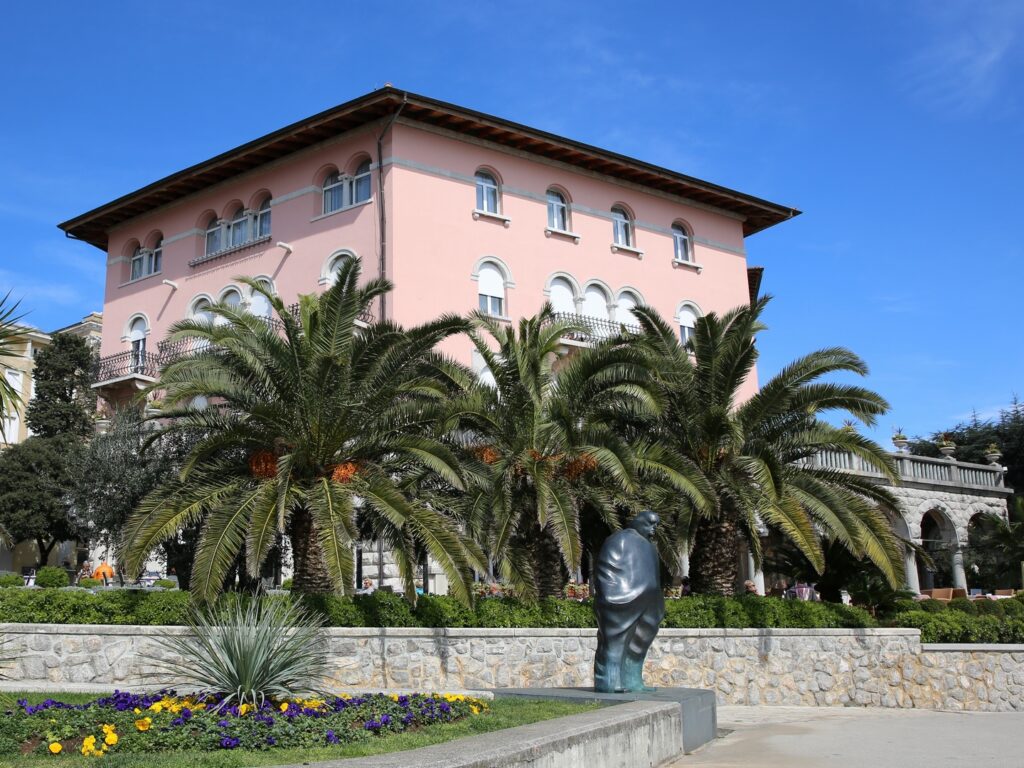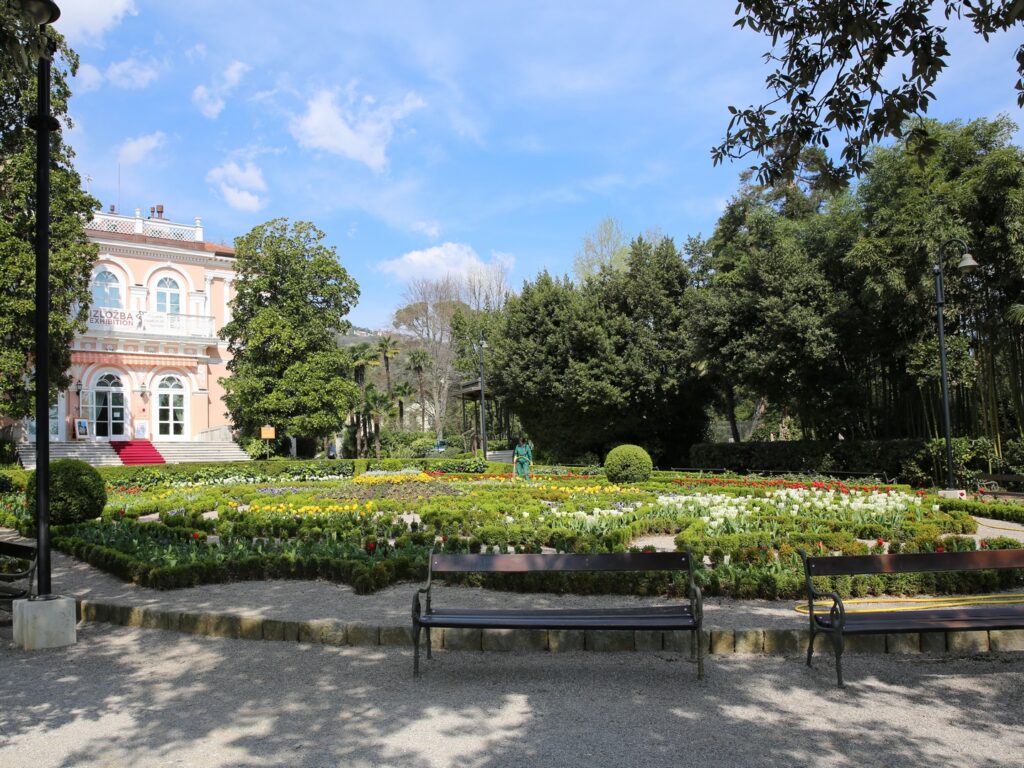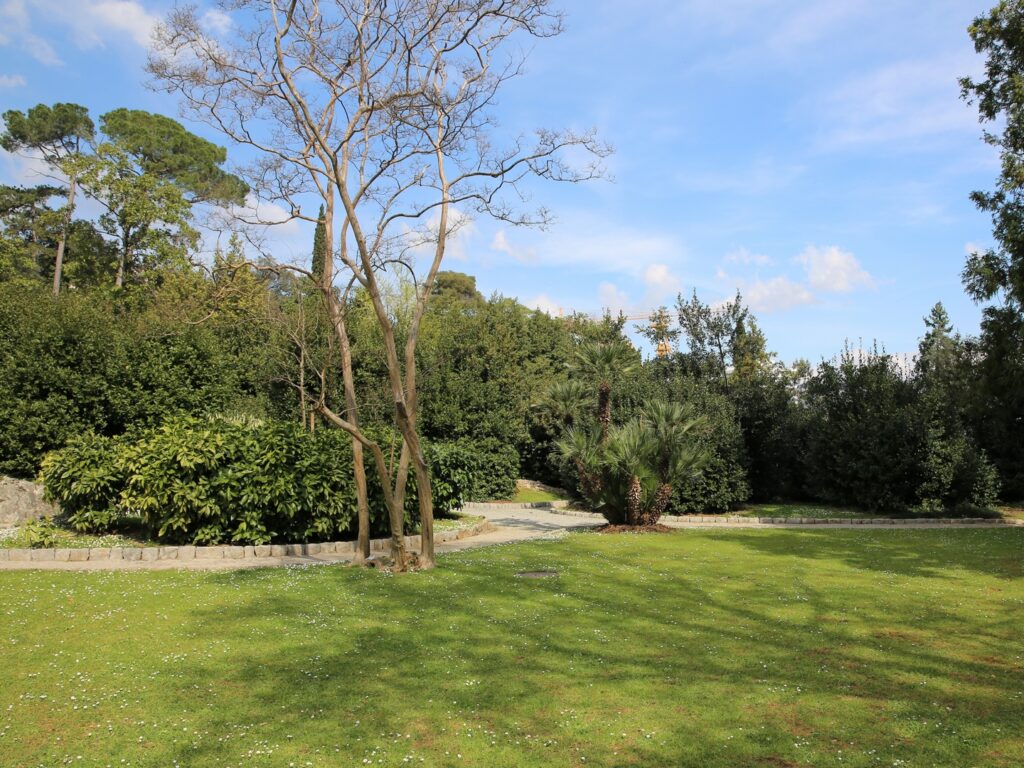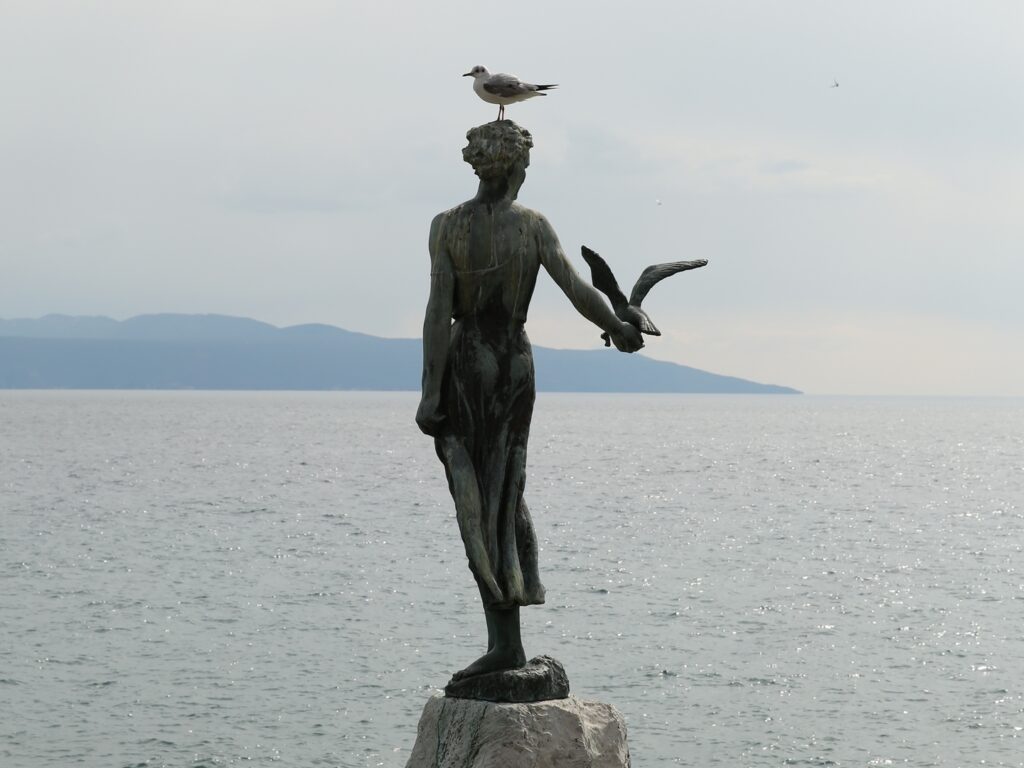Opatija – Adriatic lady
Opatija was called Abbazia until the end of the First World War in 1918. The name “Abbazia” comes from Italian and means “abbey”. It derives from the Benedictine Abbey of St. Jacob, which was founded in Opatija in the 15th century and gave its name to the town.

During the time of the Austro-Hungarian monarchy, Abbazia was a popular spa and vacation resort for the wealthy society. The place was known for its picturesque coastline, mild climate and natural healing springs. The wealthy guests from all over Europe came here to relax and enjoy the luxurious ambience.
After World War I and the collapse of the Habsburg Monarchy, Abbazia became part of the newly established Kingdom of Serbs, Croats and Slovenes, which later became Yugoslavia. At that time the town was given the Croatian name Opatija, which refers to the historical importance of the Benedictine abbey.
Today, the town is officially called Opatija and is known by both locals and tourists. However, the name Abbazia is still occasionally used, especially in a historical context or in connection with the town’s Austro-Hungarian past.
Opatija has a long tradition as a popular vacation resort. The city quickly developed into a fashionable spa resort, which was called the “Adriatic Lady”.

One of the most famous sights in Opatija is the Lungomare promenade, a beautiful coastal promenade that stretches along the coast and offers magnificent views of the sea and surrounding islands. There are also many well-kept parks and gardens, including Angiolina Park, which features exotic plants and a 19th century pavilion.

Opatija is also known for its first-class hotels, restaurants and casinos. Hotel Kvarner, opened in 1884, was the first hotel on the entire Adriatic coast and is still in operation today. The town is also a popular venue for cultural events such as the Opatija Summer Open Air Festival, which features concerts, theater performances and other cultural events.
Opatija has a marina called Marina Admiral, which is suitable for recreational boats and yachts. The marina is located in the immediate vicinity of the city center. There are moorings with electricity and water connections, as well as sanitary facilities and supplies for fuel. There are restaurants, cafes and bars nearby where visitors can take a break, relax and enjoy the view of the sea. In the vicinity of the marina there are also stores and supermarkets where you can buy provisions and boating accessories.

The story of the “Girl with the Seagull” refers to a statue that is a landmark of the town of Opatija. The statue represents a seagull perched on a high pedestal and looking up to the sky. Here is a summary of the story of the “Girl with the seagull”:
The statue was created in 1956 by the Croatian sculptor Zvonko Car. It was originally designed and placed as part of a fountain complex. The “Girl with the Seagull” quickly became a symbol of Opatija and acquired great importance for the city.
The statue has found its place near the Lungomare, the famous coastal promenade of Opatija. It has become a popular meeting place for locals and visitors who want to enjoy the view of the sea and the surrounding landscape.
The “Girl with the seagull” symbolizes the connection of the town of Opatija with nature and the coast. The seagull itself also represents freedom and the connection with the Adriatic Sea. The statue became a popular photo motif and has become a symbol of the beauty and charm of the city.
Over time, the “Girl with the Seagull” has been restored and maintained to preserve her original splendor. She remains a significant landmark of Opatija and a symbol of the maritime traditions and natural beauty of the city.
The “Girl with the Seagull” is a beloved symbol of Opatija and a popular place where visitors and locals can meet and relax. It embodies the history and character of the town and has become a distinctive element of the coastal landscape.
All in all, Opatija is a charming destination with a rich history, picturesque coastline and a variety of leisure and recreational opportunities. It attracts visitors from all over the world who want to enjoy the beauty and charm of this coastal town.
